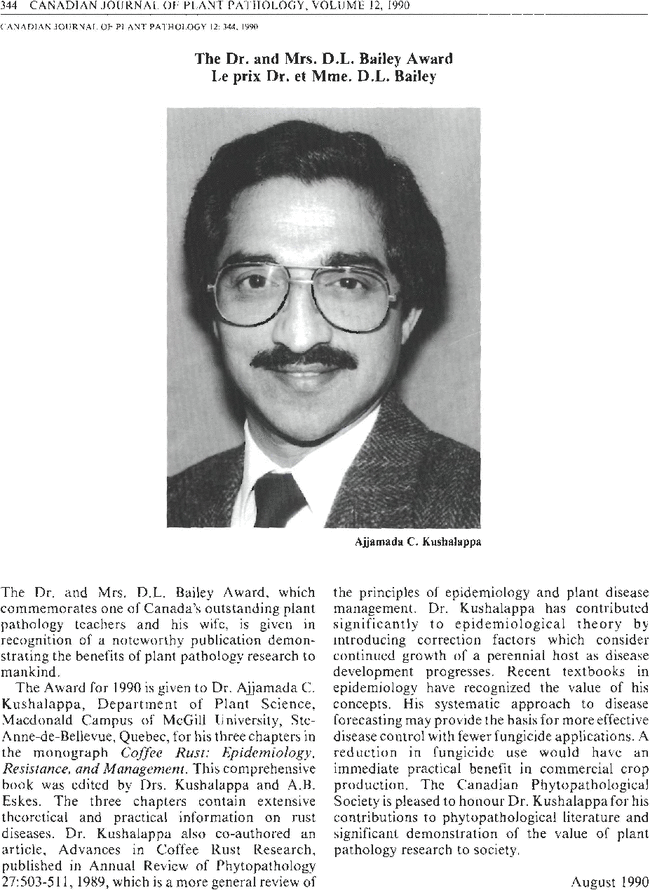
source:http:/www.tandfonline.com / August 1990

source:http:/www.tandfonline.com / August 1990
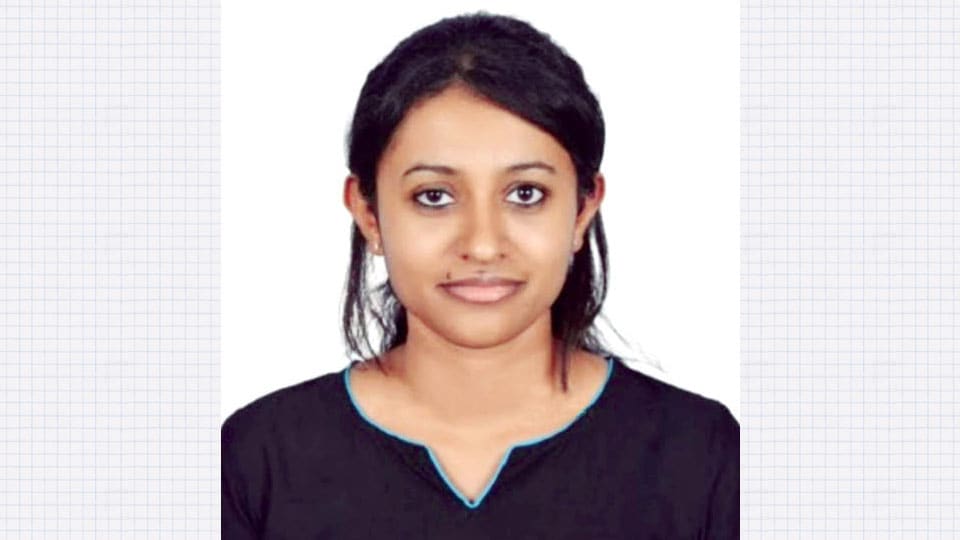
Mysore/Mysuru:
Dr. Chovanda Sneha Harish of Mysuru has secured M.D. in Radiodiagnosis from Maulana Azad Medical College, New Delhi.
Sneha did her schooling up to 10th standard at Nirmala Convent School in Gokulam. She cleared SSLC exam in 2008, securing 95.68 percent. She joined Sri Bhagawan Mahaveer Jain College, JC Road, Bengaluru, for her PU education and passed 2nd PUC by securing 94.83 percent in 2010.
After securing 524th rank in the Karnataka Common Entrance Test (K-CET) for Medicine, Sneha joined Mandya Institute of Medical Sciences in 2010. On clearing her 4th year of MBBS in 2014 Sneha finished her one year of internship from the same institute in 2016.
Sneha secured 113th rank in the AIIMS entrance exam and joined as a Post-Graduate resident in the Department of Pathology. Later she discontinued her studies in AIIMS as she secured 12th rank in NEET-PG exam which is an all India entrance test for Post-Graduation courses and joined Maulana Azad Medical College for specialisation in Radiodiagnosis (M.D) and completed the course in July 2020.
She is the daughter of Chovanda Harish and late Leela Harish (Ajjamada). Hailing from Maggula village in Virajpet, Kodagu, the family presently resides at Vijayanagar 2nd Stage, Mysuru.
source: http://www.starofmysore.com / Star of Mysore / Home> News / August 24th, 2020
Acviss Technologies develops a “no internet” blockchain-based traceability application for the Coffee Board of India.

Brand protection and consumer engagement technology company Acviss Technologies develops a “no internet” blockchain-based traceability application for the Coffee Board of India. This app is designed to protect coffee production from counterfeiting.
The Coffee Board of India has been working with marginalized tribal coffee growers to help them improve their farm productivity and quality. With the introduction of this anti-counterfeiting technology, farmers have been able to benefit from higher incomes in their farm produce.
In the last few years, the demand for differentiated coffees with traceability features has been increasing across the world and the differentiated coffees which can be traced back to their source can help obtain a premium for these coffee farmers.
Commenting on this, Vikas Jain, Founder, of Acviss Technologies, said, “It has been a pleasure creating a solution for the Coffee Board of India, we’ve not only built something innovative but we’ve also tried to make it accessible and helpful for the common man, the app we have created is very simple and does not require Wifi for farmers to scan. It’s a very easy and user-friendly app created first and foremost for the benefit of farmers”
The blockchain-based traceability application by Acviss is an anti-counterfeiting solution that helps to reorganize the unstructured supply chain, provides transparency in transactions, and protects farmers from fraud and fake GI tag products with the help of quality evaluation.
This app also helps farmers to generate stable income and protects them from any collateral damage with the help of automated payments, insurance, and financing as there is no middleman involved. For the end users, this app also helps consumers by providing authenticated certifications ensuring that the bought product is safe for consumption.
Talking about this implementation, the officials of the Coffee Board of India, said, “We have worked with Acviss to develop a blockchain solution that has been implemented in Karnataka and we have been very satisfied with the output. With this solution, the farmers have been able to gain benefits. Their incomes have gone up by about 43 per cent because of this traceability app.”
Coffee has become an increasingly common target for food fraudsters, with low-quality ground coffee beans adulterated with filler ingredients such as corn, barley, wheat, soybeans, rice, beans, acai seed, brown sugar, or starch syrup. One of the main drivers has been a reduction in coffee bean output due to poor harvests in some key producers.
With this application, coffee procured by these tribal farmers can now be traced from the grower to the consumer. Coffee parameters like moisture, weight, type and outturn captured at source farms are mentioned. Along with this, certification data is also available for each sample collected.
To build consumer confidence, this app also displays the farm locations and the farmer data. It helps in simpler transactions between farmers and the end consumer with the help of digitalization as every product packaged goes through an authentic signature. This digital signature cannot be tampered with and helps in easy tractions between the farmers, processing unit, warehouse, distributor, retail, and finally the consumer.
Coffee has become an increasingly common target for food fraudsters, with low-quality ground coffee beans adulterated with filler ingredients such as corn, barley, wheat, soybeans, rice, beans, acai seed, brown sugar, or starch syrup. One of the main drivers has been a reduction in coffee bean output due to poor harvests in some key producers.
source: http://www.bwdisrupt.businessworld.in / BW Disrupt / Home / by BW Online Bureau / December 03rd, 2022
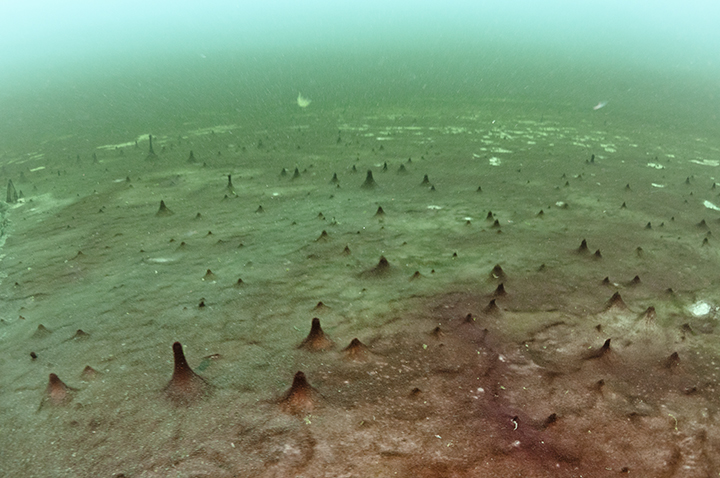
By Daniel Schoenherr
Special microbial mat systems in Alpena, Michigan, are helping scientists search for extraterrestrial life.
“It’s so different, and feels otherworldly,” said Stephanie Gandulla, a diver with the National Oceanic and Atmospheric Administration’s Thunder Bay Marine Sanctuary. She has sampled the mats near the sinkholes on the lake’s bottom.
You may have seen a microbial mat before — the green algae on wet rocks at the beach is an example.
Algae’s green color comes from chlorophyll — a substance that uses sunlight to turn carbon dioxide into energy. Carbon dioxide and oxygen support most of life on Earth.
But under special conditions, like those at three sinkholes just 2½ miles east of Alpena, primitive forms of microbes called cyanobacteria can survive without either of them.
These are white, not green, and they get energy from chemicals in the water.
“They are everywhere, but they are incredibly hard to find,” said Bopaiah Biddanda, a biologist with Grand Valley State University’s Annis Water Research Institute, who has been studying them for 20 years.
Such mats are normally found in ocean waters over 32,000 feet deep, but they can be found only 80 feet below the surface of what is known as Lake Huron’s Middle Island Sinkhole.
The sinkhole’s biologically extreme environment can help simulate sample collection in extraterrestrial worlds where life is based on similar chemicals. A new study by Biddanda models scenarios where robots could analyze material beneath the water of other planets. It’s based on the work in Lake Huron.
The study focuses on two methods: suction devices for soft mats and coring devices for hard mats.
Click on the photo below to watch a video about these mats:
The sinkholes near Alpena provide sulfuric, oxygenless groundwater that creates the conditions needed for the mats to grow. Filaments of cyanobacteria drift together, creating a wispy white-purple flow.
“It almost looks like a mirage,” Gandulla said.
It could be a long time before the experience from sinkholes in Lake Huron will be used to explore the potential of life on planets elsewhere, but Biddanda’s exploration is yielding other finds now.
Recently, for example, his team found an explanation for the mats’ mysterious ability to change colors overnight.
The purple and white cyanobacteria travel upwards to capture energy from the top of the mat, according to the study. During the day, microbes with color capture the small amount of sunlight reaching the seafloor with chlorophyll.
As the sun sets, the white microbes move to the surface of the mat to absorb chemicals in the sulfuric water for their energy. This continuous, vertical shift in microbes causes patches of the mat to change between purple and white in a daily cycle.
The microbial mats thrive off a special soup of chemicals in the groundwater, but changes in land use could disrupt it in the future.
The Thunder Bay sanctuary is constantly combating such threats to coastal ecosystems such as the one near Alpena.
“Development might choke off the water supply,” Biddanda said.
The marine sanctuary offers educational programs and tours to K-12 students and operates a welcome center year-round.
“We work together to protect it as a community,” Gandulla said.
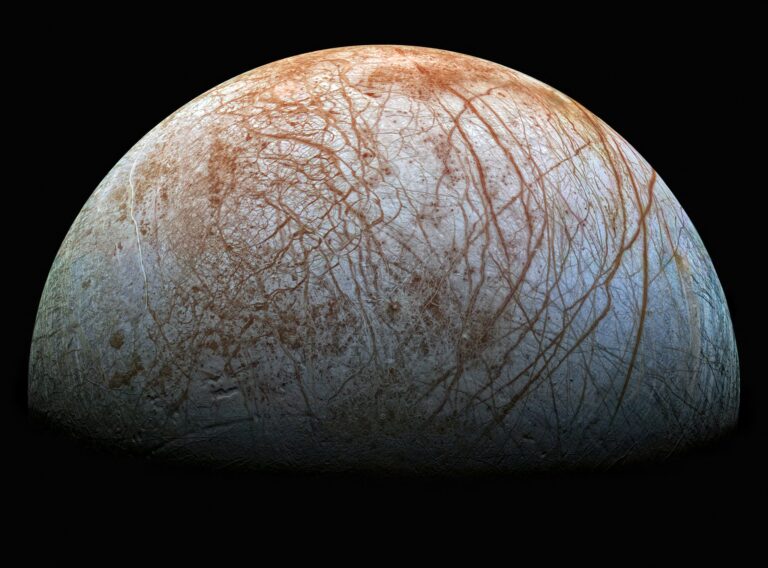
The characteristics of Middle Island Sinkhole’s cyanobacteria could hold the key to much more than planetary exploration. They could lead to advances in other scientific fields, such as evolutionary biology and medicine.
“We have a library of pharmaceutical value here,” Biddanda said “This could help us down the road.”
And, he noted that they look cool: “There is something fascinating and mesmerizing about these colorful mats.”
We’re a project of the Knight Center for Environmental Journalism at Michigan State University.
source: http://www.greatlakesecho.org / Great Lakes Echo / by Daniel Schoenherr / November 22nd, 2022
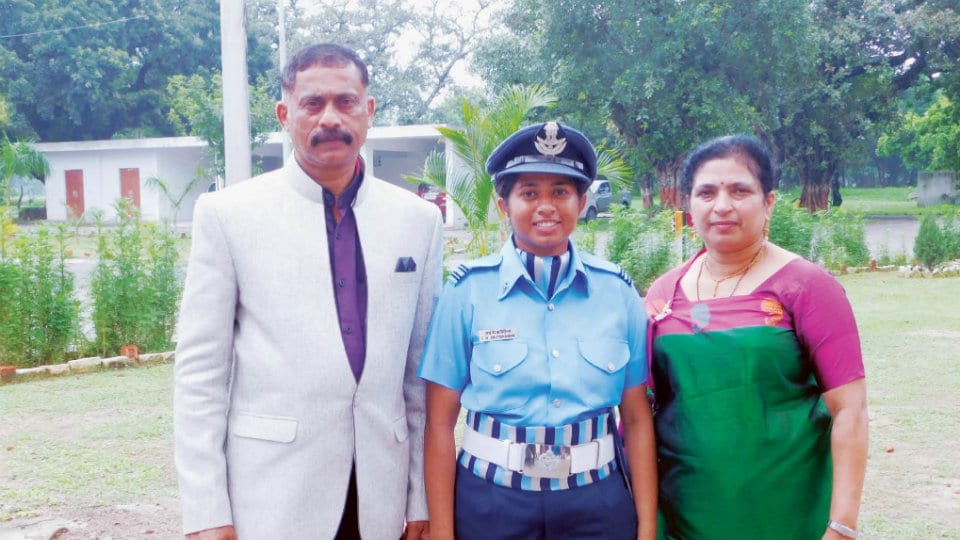
Madikeri:
Dr. Inanda B. Kaveramma has been promoted as Flight Lieutenant in the Indian Air Force (IAF), probably becoming the only Kodava lady who is serving in the IAF as a doctor.
She had undergone the training as part of her internship in medical education and cleared the Short Service Commission exams while continuing her medical studies at Tadikal Subbaiah Medical and Dental Sciences in Shivamogga where she had secured a merit seat.
She later completed her medical training at the Command Hospital in Bengaluru. Now Kaveramma has been promoted as Flight Lieutenant. She completed her Military training MOBC (Medical Officers’ Basic Course) in Lucknow last July.
MOBC is a foundation course for Army doctors, in the course they are made to do basic drill to get their bearing correct and then taught basic fundamentals of the Army functioning, units, and how they would be required to perform their duties in peace and war.
At present, Kaveramma is serving the nation at Jodhpur Air Force Station in Rajasthan. She completed her primary education at Coorg Public School in Gonikoppal and went to Expert PU College in Mangaluru.
Kaveramma is the daughter of businessman and Star of Mysore correspondent Inanda Bopanna and Bharathi at Ponnampet in South Kodagu. She is the granddaughter of Inanda S. Cariappa and Janaki of Chikkamandur and businessman Manippanda Somaiah and Parvathi of Gonikoppal.
source:http://www.starofmysore.com / Star of Mysore / Home> News / August 02nd, 2019
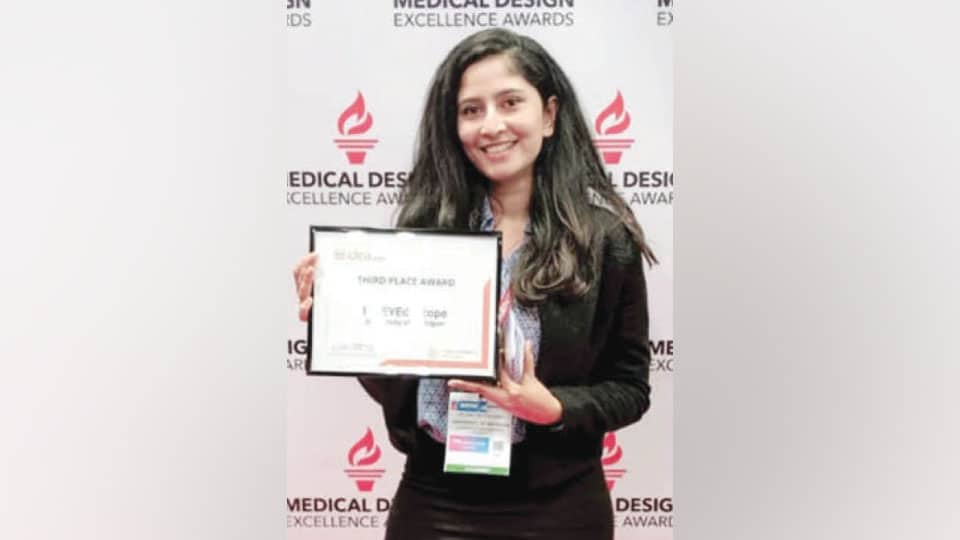
Madikeri:
Palandira Vichal Muthanna has won the Medical Design Excellence Award-2019 with her team. The team stood third in national-level competition “BMEidea-2019” where teams across the United States with new innovative medical technologies participated.
The award ceremony was held at Jacob K. Javits Convention Centre, New York, on June 11. During her research at the University of Michigan, Vichal and her team developed a new device called ‘KalEYEdoscope’ to track the progression of a condition called ‘Age-related Macular Degeneration’
Macular Degeneration is the leading cause of blindness in the world and currently there is no device in the market to help track its progression on a regular basis. The award was in recognition of their work in the development of this innovative, simple and novel medical device and in support to further develop the same.
Palandira Vichal is an M.Tech in Bio-Medical Signal Processing and Instrumentation from BMS Engineering College in Bengaluru. Earlier, she had invented a device to monitor the vitals of both mother and child during labour. The device invented by Vichal not only monitored the vital parameters of both mother and child, but also raised an alarm in case of any fluctuations so that the doctors and medical staff can rush to the patient’s rescue.
Vichal completed her early education in St. Joseph’s Girls High School, Madikeri and higher secondary education at Vidyaniketan PU College, Gonikoppal. She did her engineering from Vidyavardhaka College of Engineering in Mysuru and M. Tech from BMS College of Engineering in 2015.
Vichal is the daughter of Palandira Jaya Muthanna and Mithuna Dechamma (daughter of Mukkatira Doremani Ponnappa) of Murnad in Kodagu district and grand-daughter of Karnataka Rajyotsava Awardee late Palandira Devaiah.
In her academics, Vichal was the co-ordinator for the Indian Society for Technical Education (ISTE) for 4 years from 2009-2013. She was the Branch Association (IMPULSE) Co-ordinator for two years in Vidyavardhaka from 2011-2013. She won the Gandhian Young Technological Innovation Award -2006 from Biotechnology Industry Research Assistance Council (BIRAC) – Society for Research and Initiatives for Sustainable Technologies and Institutions (SRISTI) for her project ‘Device for Intrapartum MaternoFetal Care.’
source: http://www.starofmysore.com / Star of Mysore / Home> News / June 21st, 2019

24th Local Board of Administration Meeting held
Mysore/Mysuru:
Air Vice Marshal P.K. Ghosh, Senior Officer-in-Charge Administration, Training Command, Indian Air Force, Bangalore and Chairman, Local Board of Administration, Sainik School Kodagu, chaired the 24th meeting of the Local Board of Administration of Sainik School Kodagu recently.
The Chairman was escorted to War Memorial of the school by the Horse Cavalcade where he laid the wreath and paid homage to war heroes.
A special assembly was organised in honour of the Air Vice Marshal P.K. Ghosh which began with a vandana prayer dance by girl cadets. The event preceded by a skit on ‘Women Empowerment’ and ‘Kamsaale’, a folk dance form of Karnataka, followed by a group song embracing the folk culture of Karnataka and our sister State West Bengal under a unique initiative of Government of India, namely Ek Bharat Shreshth Bharat Abhiyan, was presented during the programme.
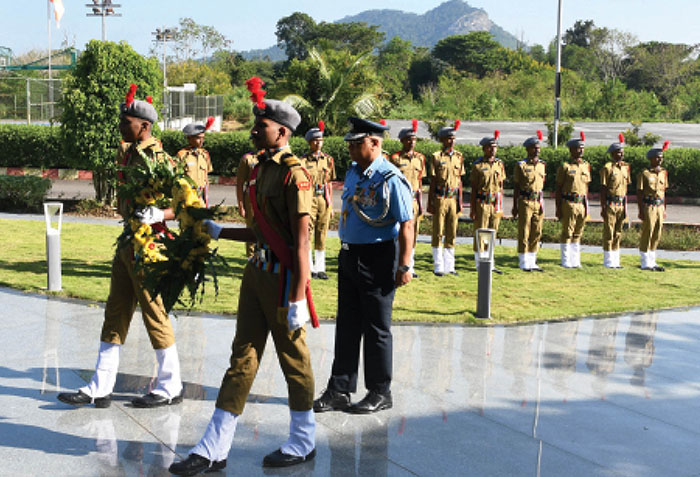
The Chairman thanked the Government of Karnataka and Kodagu District Administration for their unflinching financial support for the growth of the school.
The Chairman interacted with the staff and cadets and inaugurated a weather station recently installed at the school. The weather station is equipped with many advanced weather instruments like Sunshine Recorder, Open Pan Evaporimeter, Cup Type Anemometer, Stevenson Screen, Wind Vane and Rain Gauge which would be instrumental in imparting quality education amongst the students in the coming years.
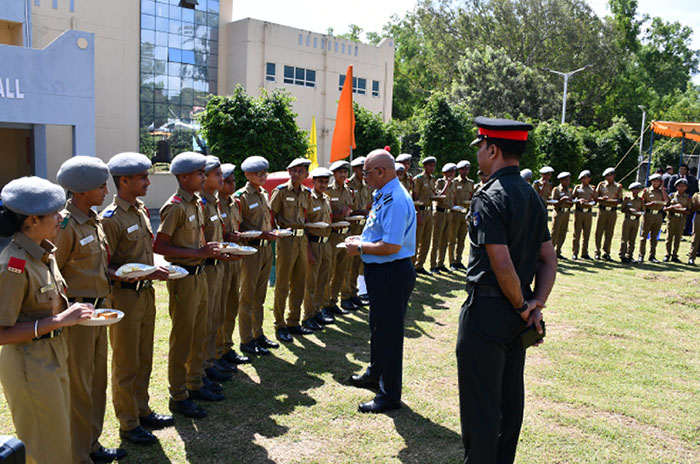
Gp. Capt. R.R. Lall, Command Education Officer, Bangalore, Dr. Nanjunde Gowda, Additional Deputy Commissioner, Kodagu district, Lt. Col. Ajit Singh, School Administrative Officer, Dr. V. Prasad, Associate Professor, Representative from Regional Institute of Education, Mysuru, Vedamurthy, DDPI, Kodagu District, M.G. Mallikarjun, Executive Engineer, CPWD, Mysuru, M.S. Chandrashekhar, Assistant Engineer (Civil), CPWD, T. Nagendra, Assistant Engineer (Electrical), CPWD, Mysuru, Asha Ram, Junior Engineer, CPWD, Mysuru and Prakash Krishnabhatta Joshi, Parent Member were present in the Local Board of Administration Meeting.
Col. G. Kannan, Principal and Member Secretary, briefed all the training and administrative aspects of the school and the progress made in the past six months. The members deliberated and arrived at various policy decisions for future development of the school.
source: http://www.starofmysore.com / Star of Mysore / Home> News / October 21t, 2022
The Karnataka State Pollution Control Board and the Kodagu district administration conducted a meeting in Madikeri on Thursday to elicit public opinion on establishing a solid waste management plant at 2nd Monnangeri village.
The Deputy Commissioner B.C. Satish underlined the imperatives of establishing such a plant for scientific disposal of solid waste being generated in Madikeri and sought public cooperation.
A section of the people from 2nd Monnangeri village expressed reservation that their source of drinking water would be polluted.
The Kodagu district administration will launch a slew of programmes with stakeholders of the hospitality sector to mark World Tourism Day on September 27.
There will be a walkathon in Madikeri at 6.30 a.m. while a plastic clearance drive will also be launched on the day.
The stakeholders sought concessions on vehicle entry tax for 10 days so as to encourage tourists from other States to visit Kodagu.
source: http://www.thehindu.com / The Hindu / Home> News> India> Karnataka / by The Hindu Bureau / Mysuru – September 22nd, 2022
The Deputy Commissioner of Kodagu B.C. Satish has said that a master plan for the proposed mini planetarium and sub-regional science centre in the district will be prepared soon to get the project started.
The mini planetarium and the sub-regional science centre is the project of Karnataka Science and Technology Promotion Society (KSTePS) and will help promote scientific temper and popularise science in the society.
He recently attended a meeting pertaining to the implementation of the project and later said that the master plan will take into account the unique geological conditions and terrain of the district and come up with a suitable design to house the centre.
While the sub-regional science centre will come up at an estimated cost of ₹4 crore, the mini planetarium will cost around ₹5.75 crore for which administrative approval has already been granted by the government, according to the Deputy Commissioner.
Though foundation stone for the centre was laid at Stewart Hill some time ago, it has been abandoned due to land slips in the region. Hence the new location has been identified on the outskirts of Karnangeri village where 3 acres of land has been sanctioned for it, according to Mr. Satish.
The DC asked for suggestions from all stakeholders to take forward the concept of the centre and promote science and technology among students. The officials were also directed to visit other sub-regional science centres in the State at Gouribidanur, Dharwad and Mangaluru to ascertain the salient features and implement the same in the Kodagu centre.
It was also mooted that the new centre would be a hub of all scientific activities to benefit the students and regularly conduct exhibitions, science and technology related quiz programmes, organise science conferences for students etc.
source: http://www.thehindu.com / The Hindu / Home> News> India> Karnataka / by Special Correspondent / Mysuru – August 08th, 2022
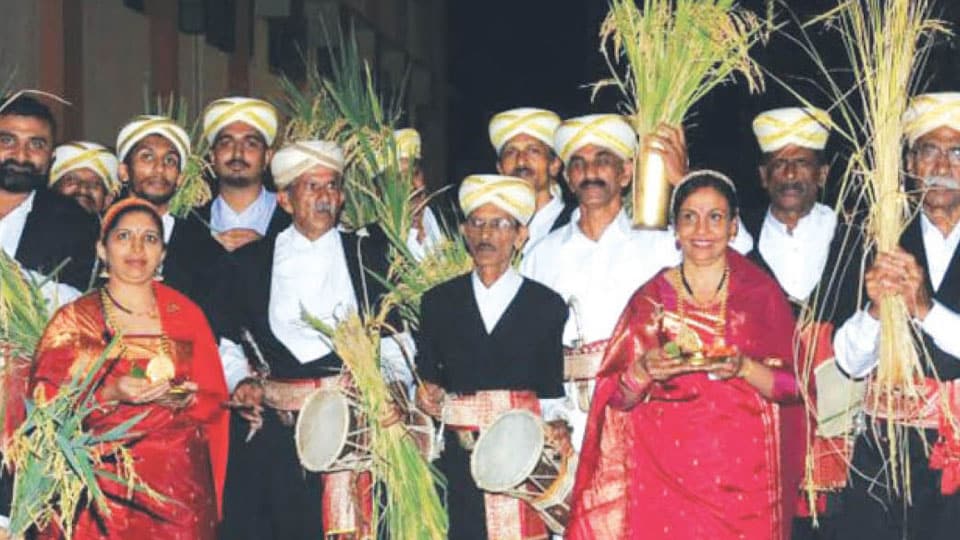
Call to help preserve memories of a vanishing people
While modernisation has opened many opportunities for the well-qualified, it has also distanced the young from their heritage and culture. This is even more accentuated amongst Kodavas living outside Kodagu. There is a need to establish a platform where young Kodavas could learn and keep in touch with the community’s heritage, cultural practices, folklore, music, dance, festivals and history, says Mrs. Codanda Rathi Vinay Jha, IAS (Retd.) and Chair, India Foundation for the Arts (IFA), who has initiated establishing a Virtual Museum of Kodava Heritage & Culture named ‘Sandooka,’ a treasure trove of information. —Ed
Kodavas are a micro-minority community in India, who live in Kodagu (Coorg) in Karnataka State. It is estimated that there are about 1,50,000 ethnic Kodavas within and outside Kodagu.
Kodavas, by virtue of living quite isolated in a densely wooded hilly terrain on the Western Ghats of India since time immemorial, have developed their own unique culture, physical attributes, cuisine, language, attire, religious rituals and practices.
Over the centuries, Kodavas adapted themselves to the harsh weather conditions, dangers from wild animals and the inhospitable terrain of Kodagu and transformed the land to an idyllic haven it is today. With the passage of time, they toiled literally with bare hands to cultivate paddy in the valleys.
With the forests providing bountiful supply of wild game, they became expert hunters initially with bows and arrows, and later with firearms which enabled them to emerge as a warrior race. They transformed the fertile land and were able to grow enough paddy that they could export to neighbouring areas.
The interactions with immediate neighbours in present day Kerala, Mysuru and Mangaluru, influenced the Kodava language, places of worship, construction of their dwellings and some of the religious practices as well. However, Kodavas still retain their fundamental philosophy of ancestor and nature worship. They come under the broad umbrella of Hinduism.
Kodagu was ruled by Kodava Nayakas or Palegars who were basically warlords. The Haleri dynasty established their rule in Kodagu after cleverly replacing the hopelessly divided Nayakas during the early part of the 17th century. The Haleri Rajas ruled for over two centuries until the British takeover of the administration in 1834 after deposing the last Raja. During the rule of the Haleri Rajas and later the British, Kodavas remained the prominent community very much involved in the administration.
During the British rule, education was introduced and this brought about quantum changes in the lifestyle of the Kodavas. Kodavas found several employment opportunities. Introduction and scientific cultivation of coffee and spices vastly improved the economy of the region. Kodava culture and ethos found expression in the writings by the British, European and Kodava authors.
By the time India got her independence, many Kodavas held important and high-level offices in sectors such as the Defence Forces, Administration, Revenue Department, Forest Department, Police, in the field of Education, Engineering and Medicine.
Kodavas have several distinctive elements in their social, cultural and religious practices. One of them is the deferential status given to women. There is no dowry system in the community. Centuries ago, widow remarriage was permitted. This enlightened attitude is now reflected in well-educated Kodava women shining in a variety of fields.
After India’s independence many Kodavas ventured out of Kodagu seeking better opportunities in education, employment, business and sports. Kodavas are now spread all over the globe. The last three decades has seen a large number of Kodavas migrating outside the country. There is now a sizable number of Kodava diaspora in the US, Canada, UK and Australia. In many cases, there are a couple of generation of Kodavas born and brought up outside Kodagu and outside India as well.
While modernisation has opened many opportunities for the well-qualified, it has also distanced the young from their heritage and culture. This is even more accentuated amongst Kodavas living outside Kodagu. There is a need to establish a platform where young Kodavas could learn and keep in touch with the community’s heritage, cultural practices, folklore, music, dance, festivals and history.
It is with this aim in mind that Mrs. Codanda Rathi Vinay Jha, IAS (Retd.), as Chair, India Foundation for the Arts (IFA), initiated establishing a Virtual Museum of Kodava Heritage & Culture (VMKHC). This project is evocatively named — Sandooka — a treasure trove of information. IFA has successfully supported several path-breaking projects in the field of art and culture.
Sandooka will be a living museum that will be interactive and open to receiving relevant new materials from the public. People, especially the future generations of Kodavas, will have an easily accessible platform to gather details of their heritage. Weblinks will also be given to some of the websites dealing with Kodava culture. It is hoped that this treasure trove of information will be of immense help to those who wish to carry out further research on Kodavas. VMKHC will cover the following aspects of Kodagu and Kodavas:
1. Customs and Rituals
2. Cuisine
3. Architecture
4. Clothes and Jewellery
5. Art & Craft
6. Landscape
7. Literature and Folklore
8. Community Histories
9. Festivals
The project is generously funded with a Corporate Social Responsibility (CSR) grant from Recaero India Pvt. Ltd., which is a pioneer in the field of aerospace engineering and is headed by Vinay Jha, IAS (Retd). A highly professional team has been forged to deal with every aspect of the project. The team comprises:
Lina Vincent – Project Head; Upasana Nattoji Roy – Designer (Switch Studio); Saurav Roy – Designer (Switch Studio) and Mookanda Nitin Kushalappa – Researcher.
IFA office-bearers are: Arundhati Ghosh (Executive Director) and Darshana Davé (Project Co-ordinator); Advisory Group: Rathi Vinay Jha, C.P. Belliappa and Hemanth Sathyanarayana.
Sandooka invites submission of Kodava artefacts, rare photographs, antiques including jewellery (photos) and anecdotes of yore. All accepted materials will be given due recognition and credits. Sharing your valuable knowledge and collections will enrich the contents of Sandooka.
For details of submission of materials, please visit: www.sandookamuseum.org
source: http://www.starofmysore.com / Star of Mysore / Home> Feature Articles / by C.P. Belliappa / August 01st, 2022
